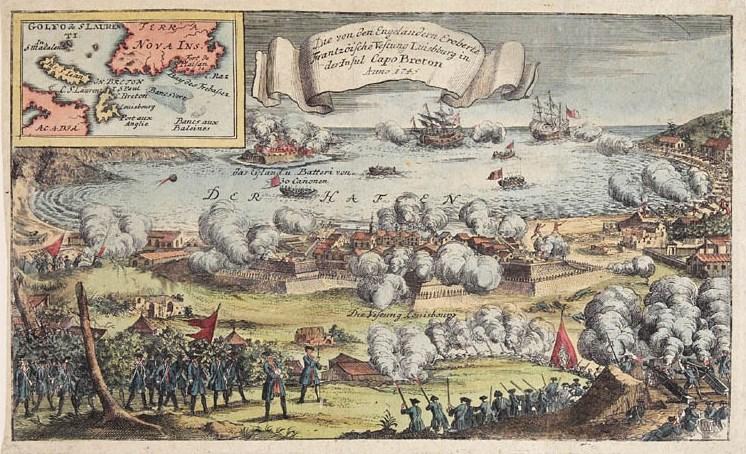News of the “unprovoked attacks” by British Regulars at Lexington and Concord—and the ensuing guerrilla war unleashed against them by 4,000 vengeful colonists—spread throughout New England like a whirlwind. The resulting death and destruction, stemming from British efforts to confiscate “rebel ordnance,” prompted an immediate reaction: an estimated 12,000 militiamen converged on Boston. They joined with those who had fought on April 19 and laid siege to the city, effectively trapping the British Army inside.
Despite their numbers, the colonial militias lacked heavy artillery—cannons, howitzers, and mortars—most of which were made and imported from Europe. They also had limited supplies of gunpowder. In contrast, British forces were well-equipped with artillery capable of devastating any hostile force that challenged them.
Capt. Benedict Arnold

While en route to Boston, Capt. Benedict Arnold encountered Col. Samuel Parsons, who was returning to Connecticut from Cambridge. They discussed the siege and the dire need for artillery. Arnold informed Parsons that Fort Ticonderoga in upstate New York housed a large supply of artillery. Because the fort was lightly defended, Arnold believed it could easily be taken. Both men then parted ways—each resolved to make the fort’s capture his mission.
The Green Mountain Boys
Meanwhile, in Connecticut, Parsons met with allies who were more supportive of the plan. As a result, two separate parties set out north to recruit volunteers for the mission. They eventually regrouped before reaching Pittsfield, Massachusetts Bay, where they met with militia Col. James Easton and attorney John Brown.
Take Fort Ticonderoga!
Back in Cambridge, Dr. Warren lost patience with Gen. Gage after evacuations were suspended following an unexpectedly large exodus. He approved Arnold’s plan, promoted him to colonel, and authorized him to lead a 400-man strike force. Arnold was given supplies, ten horses, and orders signed by Dr. Church. Accompanied by two officers and a servant, Arnold departed, unaware that another expeditionary force was already forming in Vermont.On May 8, the combined strike force held a second council of war in Castleton, Vermont. They planned to move the next morning to Hand’s Cove on Lake Champlain—near Shoreham, Vermont—remaining hidden until nightfall. A 30-man team under Capt. Samuel Herrick would seize boats at Skenesborough (modern Whitehall, New York) and sail them to Hand’s Cove to ferry the men across the lake. The assault on the fort was set for dawn on May 10.
Col. Benedict Arnold Meets Col. Ethan Allen
Learning en route of the other strike force, Arnold ordered the two officers to continue with their recruiting efforts while he and the servant rushed ahead to assert his command. At Castleton, he declared himself the commander and that he would lead the mission. He was met with mockery and defiance. Arnold revealed his orders and commission, but the men refused to follow him and threatened to disband if he persisted. Realizing he had no authority over the group, Arnold concluded that his only option was to seek a private meeting with Allen and reason with him.Arnold met Allen the next morning, May 9, in Shoreham. Their meeting quickly grew heated.
The Crossing

That night, the strike force—now between 200 and 270 men—gathered at Hand’s Cove and waited for Herrick’s boats. By 2:00 a.m., with no sign of Herrick, Allen and Arnold searched for alternative means for crossing the lake. They acquired two small boats and, by 3:00 a.m., began ferrying 83 men—including Allen, Arnold, Easton, and Brown—to the lake’s western shore. Once across, the boats were sent back for the remaining men.
The Assault

Between 4:00 a.m. and 4:30 a.m., Fort Ticonderoga loomed ahead as dawn appeared. The strike force advanced silently while watching the walls above for defenders who could suddenly appear. Near the gate, Allen and Arnold raced each other to be first inside. A lone sentry spotted them, aimed his musket, and fired—but the gun misfired. He ran into the fort yelling, with Allen and Arnold close behind.
The strike team followed, shouting war cries, and pouring onto the parade ground like an ocean wave. They cried out three loud huzzahs—waking the remaining British soldiers and their families garrisoned at the fort.
The 48 defenders, commanded by Capt. William Delaplace and Lt. Jocelyn Feltham, were unaware that war had broken out and did not anticipate an attack on the fort. Some of the defenders emerged half-dressed, confused by the chaos. One charged with a bayonet, but Allen deflected him with his sword and demanded the location of the commanding officer. Directed to the second floor of the barracks, Allen and Arnold charged up the stairs with swords drawn and confronted Lt. Feltham, who had just emerged from his quarters.
Feltham demanded to know by what authority they seized the fort. Allen famously replied, “In the name of the great Jehovah and the Continental Congress!” Both Allen and Arnold demanded he surrender the fort. Feltham stalled for time to give Capt. Delaplace a chance to repel the invaders.
Aftermath
Fort Ticonderoga fell without a single fatality—just one injury on each side. The victors celebrated, drinking the fort’s 90 gallons of rum, much to Arnold’s disgust. Arnold credited Allen for the capture; Allen praised Easton and Brown, omitting Arnold entirely from his report.The victory provided the Continental Army with much-needed artillery. In November, Henry Knox hauled 58 or 59 (sources vary) pieces from Fort Ticonderoga to Dorchester Heights, enabling the patriots to break the 11-month siege of Boston.
About That Spy Serving Gen. Gage
Back at Province House on April 22, Deacon Caleb Davis waited for a private meeting between Gen. Gage and a prominent gentleman to conclude. Unbeknownst to Davis, the gentleman meeting with Gage was the high-ranking traitor who spied for Gage.When the door finally opened, Davis saw Gage emerge alongside his guest. The guest appeared startled upon noticing Davis—who was equally surprised to recognize the gentleman as none other than Dr. Benjamin Church.






